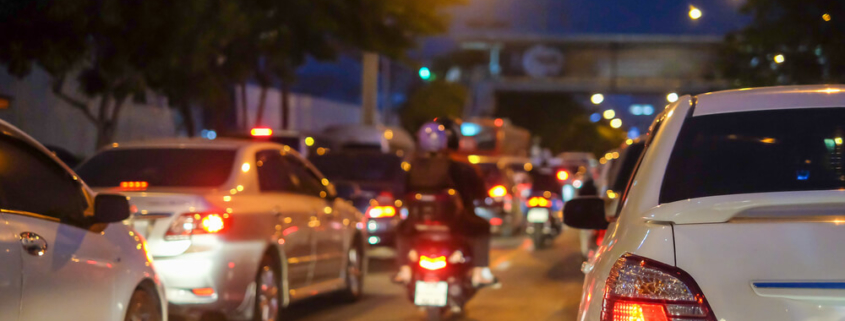What You Should Know About Motorcycles and Lane Splitting in Colorado
When a motorcycle rider drives between two rows of motorcycles moving in the same direction, the traffic maneuver is known as lane splitting. Under Colorado law, lane splitting is currently unlawful.
The Colorado Department of Transportation expressly disallows splitting or sharing lanes in the state. Further, it prohibits overtaking or passing an automobile in the same lane as the motorcycle. Motorcycle riders must overtake using a separate lane, similar to other vehicles. However, it is legal to split a lane with a fellow motorbike rider.
A motorcyclist could face a traffic infraction if they are caught splitting lanes in Colorado. Depending on the circumstances, the penalty for lane splitting is fine, ranging from $15 to $100.
Also, lane splitting could contribute points to a motorcyclist’s license, potentially leading to increased insurance premiums or license suspension. A motorcyclist can also face civil liability for damages if they cause a collision while splitting lanes. Violation of lane-splitting regulations could be grounds for a negligence lawsuit against the motorcyclist.
When is Lane Splitting Lawful in Colorado?
In Colorado, lane splitting is permissible when the splitting involves two motorbikes in the same lane. The Colorado Motorcycle Operator’s Handbook elaborates that it is unlawful for a motorcyclist to overtake or pass a vehicle in the same lane as is sharing a lane with automobiles. But motorcycle riders can share a lane or “co-ride” with one other motorbike.
Lane splitting has two versions. One version involves a motorcyclist sharing one lane of traffic with another vehicle. The other version is when a motorcycle rider travels between lanes of traffic over the dashed white lines to overtake other vehicles, called “stripe-riding” or “whitelining.”
Why do Motorcycle Riders Split Lanes?
There are extensive legal restrictions on lane splitting, yet it is common among motorcycle riders who want to save time and avoid traffic jams, especially in major cities. Some supporters of the practice state that it removes motorbikes from behind halted cars, where they can be rear-ended. These proponents of the practice say that lane splitting is safer than being stuck in traffic. It enables the motorcyclist to move to a safer position, i.e., between two larger automobiles.
Researchers from the University of California, Berkley conducted a study on lane splitting safety several years ago. Upon analyzing nearly 6,000 motorcycle crashes, the researchers determined that many motorcyclists were hit from behind by distracted motorists while sitting in traffic.
The research study’s findings indicated that lane splitting could be safe in traffic traveling at 50 mph or less, and if the motorcyclist is not traveling more than 15 mph faster than other traffic. However, the researchers found that the risk of injury increased rapidly above the 15-mph differential.
Why is Lane Splitting Hazardous?
The below-mentioned scenarios show how motorcycle crashes occur due to dangerous lane-splitting maneuvers:
- A motorcycle rider is traveling between two lanes of moving traffic when a passenger vehicle driver abruptly changes lanes and collides with the motorcyclist
- A motorcycle rider sustains injuries when a passenger opens the door to exit a car and strikes a motorcyclist moving between two lanes of traffic
- A motorcycle rider halts on the vehicle’s passenger side in the motorist’s blind spot and is struck at an intersection when the motorists attempt to make a right turn
If a motorcyclist receives a citation for lane splitting in Colorado, it is considered a Class A traffic infraction and is punishable fines ranging from around $15 to $100. In addition, they can get points on their driving records. An excessive number of points can lead to the suspension of your license.
Lane Splitting Accident Prevention
Lane splitting is deemed illegal in most states. Thus, it is likely that some measure of liability may be assigned to any motorcycle rider who is involved in a collision while splitting lanes. However, every case’s circumstances are different, and the ideal course is always to avoid situations that may lead to a crash.
When riding a motorcycle, this translates into exercising great patience and caution in congested road conditions, following traffic laws, avoiding a position in the other motorist’s blind spots, and clearly indicating your intentions.
Other drivers on the road should be aware of their surroundings at all times, allow adequate braking distance for motorcycles, and avoid cutting off or startling motorcyclists who are trying to make their way through slow-moving traffic. Whether you believe you are right or not, sharing the road with others can save lives and legal battles.
Obtain Legal Help from Colorado Motorcycle Accident Attorneys
If you have sustained injuries in a motorcycle accident due to another driver’s negligence, you may be entitled to compensatory damages from the guilty party. You should seek immediate medical treatment and acquire the documentation which law enforcement provided you in such cases. After that, make sure you consult a skilled Colorado motorcycle accident attorney to discuss your case and find out what your legal rights and options are.




Leave a Reply
Want to join the discussion?Feel free to contribute!